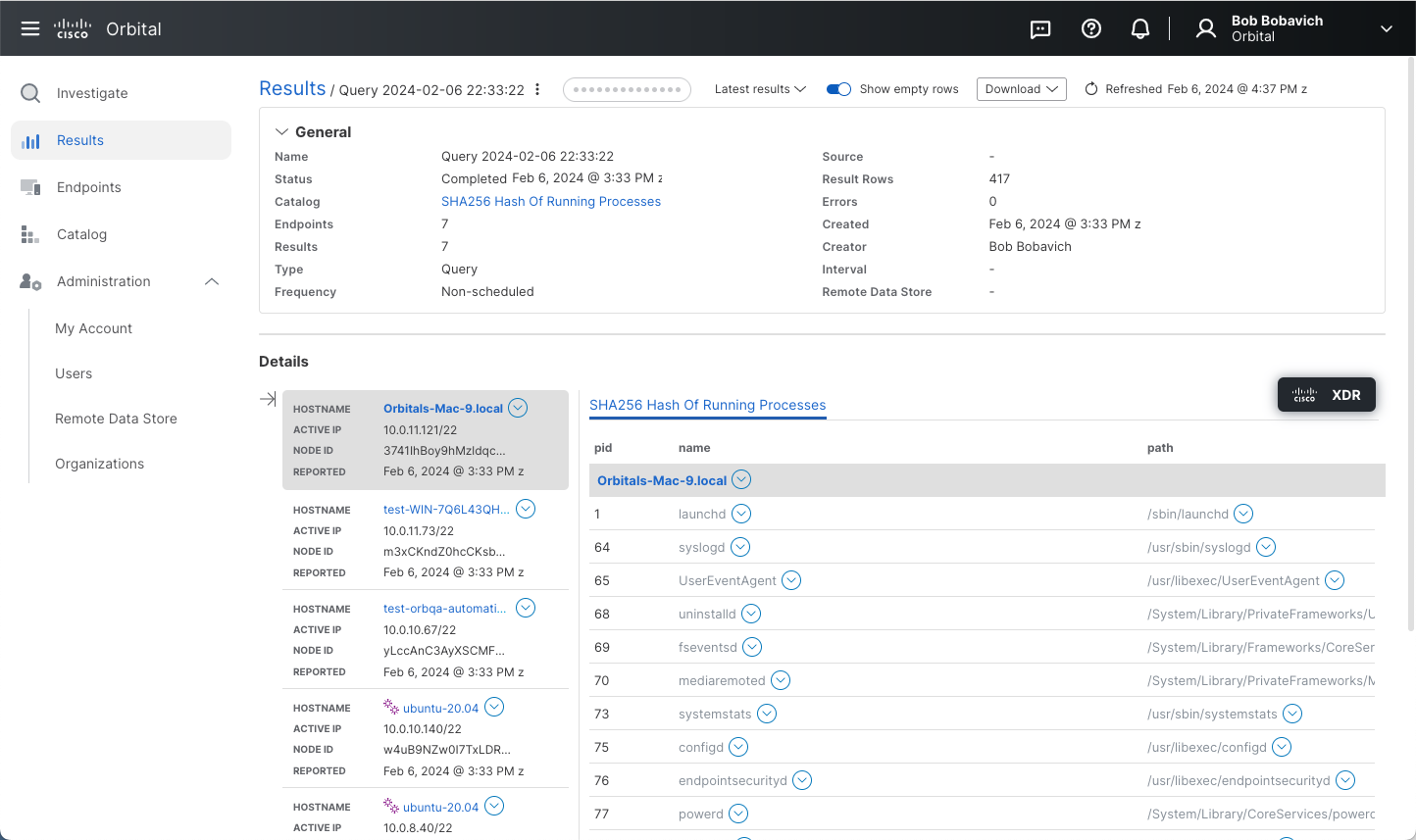Using Scheduled Queries
Once you create a query that works for you, you can schedule it to run on a regular basis. Queries can be run on the fly as temporary live queries, or you can create and schedule queries to run on a regularly scheduled basis, with the results sent to an application or data store of your choice. The schedule increments run from 5 minutes to 30 days. For example, you can schedule a job to run every 5 minutes for 72 hours; or every 24 hours minutes for 72 hours (that is, once a day for 3 days).
-
Create the query you want to have run on a scheduled basis and click Schedule Query. The Schedule Orbital Query popup window opens, as shown in the figure below.
-
Define the query's schedule by providing the parameters for the following popup elements.
-
Type the name of the query in the Query Name field. This is the name of the query's schedule that will be listed in the Results page. You do not have to provide a name to the query's schedule. If you wish, you can choose to use the default schedule name.
-
Set the query schedule's frequency using the Schedule every dropdown. Click the down arrow on the right side of the Schedule every dropdown, then select the appropriate value. Refer to the top paragraph of this topic for a definition of frequency. Refer to the Schedule every element definition for a description of the user interface element.
-
Set the query schedule's duration using the for dropdown. Click the down arrow on the right side of the for dropdown, then select the appropriate value. Refer to the top paragraph of this topic for a definition of duration. Refer to the for element definition for a description of the user interface element.
-
Select the Run Once toggleswitch if you wish to have the query's schedule run once in the next 24 hours. Selecting this toggleswitch will cancel any values you set for the Schedule every and for dropdowns.
-
Us the Remote Data Store dropdown to select the remote data store source where the query's results will be sent during its run. If you wish to select more than one remote data store sources, refer to the Setting Multiple Default Remote Data Stores section below. Also, refer to the Remote Data Store Errors section in the Remote Data Store topic for more information on Remote Data Store Errors.
-
Select the Save empty results toggleswitch if you wish to include query results where the endpoint has not returned any result values.
-
Use the Add Remote Data Store link to add a new remote data store, if the data store or stores you need are not listed in the Remote Data Store dropdown. Clicking this link will open the Settings page and display the Remote Data Stores page. Refer to The Remote Data Stores Page for more information on the Remote Data Stores page.
-
Selecting the Go to Result toggleswitch will redirect you to the Results page (shown in the figure below) and display the query's results for that job once you have started the query's run. This has the benefit of immediately viewing the results instead of having to migrate to the Results page, then find and select the results from the list of jobs.
-
Start or abandon the query's schedule.
-
Click Schedule to begin running the query's schedule. Clicking this button with remove the Schedule Orbital Query popup from the screen and start the query. Once you have started the query, you can see it listed on the Results page.
-
Click Cancel to abandon the query's schedule. Clicking this button will remove the Schedule Orbital Query popup from the screen and discard any parameters you might have set.

| Note: | The default schedule is to run the job once in 24 hours. |

or
How to Select Multiple Remote Data Stores
There may by times when you wish to sent the results of a query to more than one remote data store. In order to assign more than one remote data store to a query's schedule:
-
Click the Remote Data Store dropdown to expand it.
-
Navigate to the desired remote data store listing.
-
Select the desired remote data store so that it is displayed in the Remote Data Store dropdown's field.
-
Expand the Remote Data Store dropdown again.
-
Navigate to the next desired remote data store listing and select it.
-
Repeat until you have selected all of the required remote data stores.
| Note: | In order to delete a remote data store listing, click on the X beside the data store's name. |